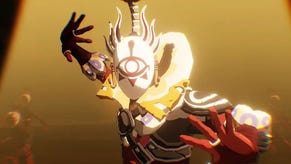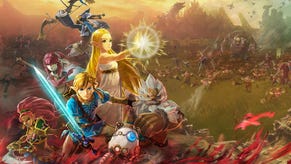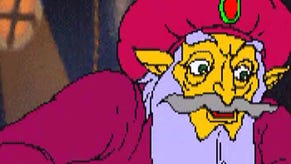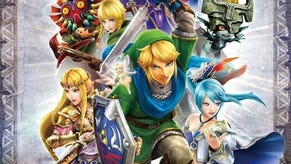How Shigeru Miyamoto Changed the Course of Hyrule Warriors, and Other Insights into its Development
Insights into the collaboration between Nintendo and Tecmo Koei, and what Eiji Aonuma learned from the process. Plus, the story behind Female Link.
This article first appeared on USgamer, a partner publication of VG247. Some content, such as this article, has been migrated to VG247 for posterity after USgamer's closure - but it has not been edited or further vetted by the VG247 team.
In his Hyrule Warriors review last week, Jeremy made this salient observation, "What [Hyrule Warriors] lacks in invention... it more than makes up for with barely contained glee at the fact that it's a Zelda game."
In other words, he wrote, the people who made it are "complete dorks for the original work on which it's based." Which, as I've discovered, is entirely true—many of Hyrule Warriors' developers are in fact nuts for The Legend of Zelda. It was a theme that came up more than once in the course of an interview that I conducted not too long ago with Hyrule Warriors producer Yosuke Hayashi and Legend of Zelda producer and caretaker Eiji Aonuma, who took some time to shed some light on the process of translating The Legend of Zelda into Dynasty Warriors ahead of its September 26 release.
As Hayashi tells it, Tecmo Koei were almost too cautious in their handling of the series at first. At the outset, Hyrule Warriors' gameplay was originally much closer to that of a traditional Zelda game than a Dynasty Warriors game. So much so, in fact, that Shigeru Miyamoto himself took notice.
"When Mr. Hayashi and I first started working on the game, we were kind of looking at it from the angle that it would be a Dynasty Warriors game that plays like other Zelda games. And I was totally onboard with that. But when we took that idea to [Shigeru Miyamoto], he said, 'Absolutely not. This kind of approach won't work,'" Aonuma remembers. "So that kind of shocked both me and Mr. Hayashi, but it was just kind of funny because it was as if we were just working on a Nintendo first-party title, just to have Mr. Miyamoto step in on a project and give us a different point-of-view, and then from there the staff starts to work out the details."
At the urging of Aonuma, the team slowly started putting their own stamp on the series, capitalizing on "the feel good action that Dynasty Warriors is known for" and contributing designs for new characters like the sorceresses Lana and Cia. But that didn't stop Tecmo Koei from leaning on Zelda's history as much as possible, sliding in multiple nods to The Legend of Zelda: Ocarina of Time, Twilight Princess, and even the original 8-bit game with elements like the Challenge Mode, which features a map in the style of the first Legend of Zelda.
It's not exactly what I expected to see from Nintendo, which once upon a time had a reputation for micromanaging anything and everything (go read about the development of Maniac Mansion sometime). If anything, I was expecting Nintendo to have to rein in Tecmo Koei in an effort to protect their characters. Instead, it was Tecmo Koei being extremely protective of The Legend of Zelda, while Nintendo encouraged them to be themselves.
Which is not to say that Nintendo failed to take an active hand in Hyrule Warriors' development. It's more that Aonuma seemed to trust Tecmo Koei's instincts and creativity. "So in kind of the early stages, they did show us the characters designs for some of the main characters, and we gave them some pretty specific advice on what was working and what wasn't working," he says. "But in the later stages, there were some very creative people at Tecmo Koei who started creating the designs for some of the other minor characters, and they just really did a great job on those, and we let them run with that."
Hayashi adds, "The one thing that impressed me was that Aonuma never said, 'Because it's the Zelda series, it should be this or that.' In fact, on our side, we were more concerned about certain conventions we needed to follow. But Aonuma sort of broke that all down for us and gave us the freedom we needed. I think everyone has the image of Aonuma as working on building the Zelda universe in detail, but in a sense these worlds kind of create themselves, and he's kind of overseeing its development. In that sense, he's almost like a mother or a father for the series. For me personally, I was always a Zelda fan, but now I have much deeper appreciation for the franchise."
"When Mr. Hayashi and I first started working on the game, we were kind of looking at it from the angle that it would be a Dynasty Warriors game that plays like other Zelda games. And I was totally onboard with that. But when we took that idea to [Shigeru Miyamoto], he said, 'Absolutely not. This kind of approach won't work'" - Eiji Aonuma
"This is the first collaboration we've had with another game franchise for the Dynasty Warriors series, so that was a new experience for us," he continues. "For the first half year, it was difficult for us to decide which elements we should and should not incorporate. So we really had trouble with that for a little while. But once we had drawn the lines for what was possible and what wasn't, the process really started to move forward."
Aonuma, for his part, has gained some new insights into the series since working with the Dynasty Warriors team. "I obviously can't get too specific, but one thing that did have some impact on me with the development of this game was the use of the map-this sort of gameplay where you have lots of battles on the map at the same time, and they change as the battle progresses. And to be able to have one character, your character, go in to the battles and interact with them, then go to other parts of the map. I thought this was the kind of gameplay that worked really well for Zelda, and that made a really big impression on me. I don't know how or if it will be incorporated into future Zelda games, but that was something that did leave an impression on me."
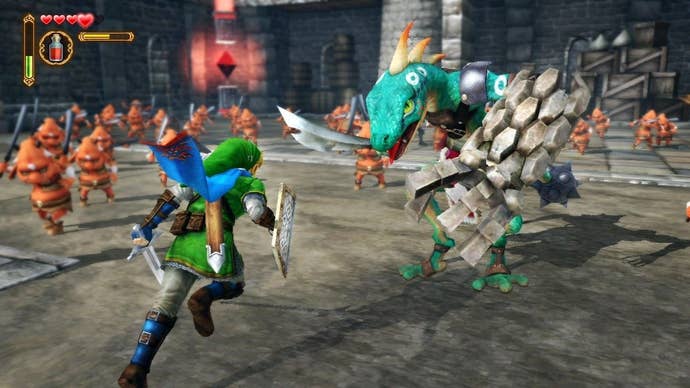
It's easy to see that Nintendo and Tecmo Koei developed a rather strong collaborative relationship through the process of making Hyrule Warriors, which has borne fruit in a game that has received much better reviews than other Dynasty Warriors games based on licensed properties, such as Dynasty Warriors Gundam Reborn.
Of course, critics rightfully knock its repetitive and shallow gameplay, which is a hallmark of all Dynasty Warriors games. As Jeremy writes in his review, "Multiple encounters happen simultaneously across a stage, and the tides of the battle constantly shift based on your choices and the enemy's tactics. On the other hand, it's all fairly dumb — your choices amount to a few key decisions while mowing down thousands of mindless goblins who basically amount to time-wasting filler. Literally, quite often; to conquer key fortresses you have to kill enough mooks to cause their boss to appear and allow you to conquer the area.
On the other hand though, Zelda feels like a much more natural fit for Dynasty Warriors than a lot of licensed properties. The remix of the classic Zelda theme moves at an appropriately energetic beat, Link's moves are familiar and satisfying, and there's even a modicum of strategy to be found in beating bosses like Gohma (Protip: Shoot it in the eye. It's much better translation than, say, Dynasty Warriors Gundam, which never really figured out how to naturally handle elements like boosts, beam rifles, and space combat.
As a result, Hyrule Warriors is a worthy spinoff, despite not straying too far from the Dynasty Warriors template. Both sides seem to have learned something from the other; and though its impact may be subtle, Hyrule Warriors has a chance to positively impact Zelda at large. In the end, a worthwhile venture for all involved.





